Mastering the Digital Marketing Agency Profit Margin: Tips for Agencies

Running an agency is tough. Be it for software development, design, or marketing, the demand is ever increasing—as is the competition.
To put things into perspective, between 2022 and 2023, there has been an almost 20% increase in the number of digital advertising agencies in the US alone (IBISWorld). Between meeting client expectations and balancing hiring and sustainable growth, the last thing you need to worry about is eroding profit margins, or worse: not having a clear picture of where your agency stands in terms of profitability.
That’s why we respond to some of your most vital questions: how do you calculate your digital marketing agency profit margin? And, even more importantly, how do you increase it?
Why Is the Digital Marketing Agency Profit Margin Important?
Digital agency profit margin is generally calculated by looking at your company’s profit (client revenue minus all your operating costs) divided by revenue (commissions, fees, incentives, and other remuneration). Having a high profit margin means that your marketing agency has the space to expand its activities by hiring new staff and investing in new business strategies and technologies, driving further revenue and increase in profit.
So, how can you break into this enchanted circle and start scaling your marketing agency?
Let’s begin with calculating your agency’s profit margin.
Increase Your Agency’s Profit Margins
Get insights into key digital marketing agency metrics with an all-in-one management tool.
How To Calculate Agency Profit Margins
As an agency, you’re constantly battling with unforeseen costs and changing budgets, so calculating your profit margins can be extremely difficult.
Remember that client that earned your agency $1000 profit at a 25% margin? Add in an extra few unprecedented revision requests from that same client and your profit drops to $500.
To be able to make informed strategic (and tactical) decisions, first you need to know your agency’s actual profit margins.
In BenchPress 2021, a survey conducted by The Wow Company, only 80% of UK agencies said that they made a profit in 2020, while 14% made a loss and 6% broke even. According to the Wow Company’s survey, average gross profit margins are 44%, while agencies should aim for a gross profit of 50% or more.
In the same survey, what was interesting to find was that over 61% of agencies received funding in the same year. These numbers indicate that it’s key to improve how you manage your agency profit margins.
Being profitable is the cornerstone of a sustainable agency. Whatever plans you have for your future, you won’t get very far if you’re not making any money
Source: BenchPress 2021
To get an idea of what your profit margins should be, you need to enter all your expenses into your agency management tool: people expenses, overhead costs, and any additional expenses your agency generates. Let’s take a closer look at each.
1. People costs (salaries and such)
Entering your employee costs into Productive is one of the first and most important steps towards getting a clear picture of your profitability. Adding in their number of working hours per week and monthly salary will give you their estimated hourly cost.
2. Freelancers
When your agency lands a new deal and you don’t have enough in-house resources to deliver the work, you reach out to your freelancers. Add them into Productive as out-of-pocket expenses within the budget of each project.
3. Overhead
Overhead costs are not only your fixed and variable company expenses. In an agency’s case, overhead expenses are all your agency’s non-billable costs, too. These can be:
HR employee salaries
Office management salaries
Marketing budgets
Accounting services
4. Any additional expenses
Hiring seasonal support or organizing a PR event as your own promotional activities can be seen as additional expenses.
Once you’ve got all your costs saved in your agency management system, you need to consider what your utilization rates are and how to form prices that will not only cover your expenses, but increase your agency profit margins.
Why Your Digital Agency Shouldn’t Calculate Profit in Excel
Let’s take a look at an example of how John Smith used to manage his profitability in spreadsheets and why you shouldn’t calculate agency profit margins in Excel.
First, John had all his project budgets and people costs in Excel:
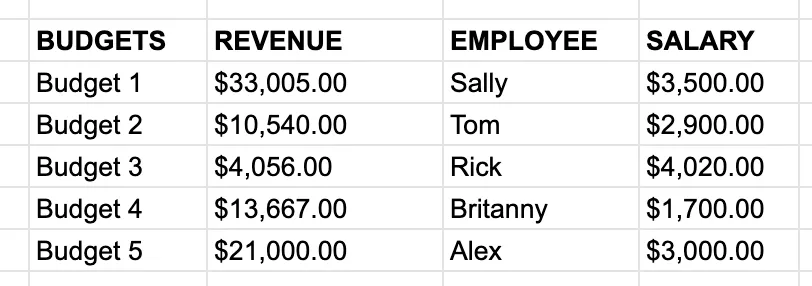
He thought he was handling things well and that he had a clear overview of his profitability.
Soon, some additional, unforeseen bills started coming in per each project, and as they came, he kept adding them to his expenses:
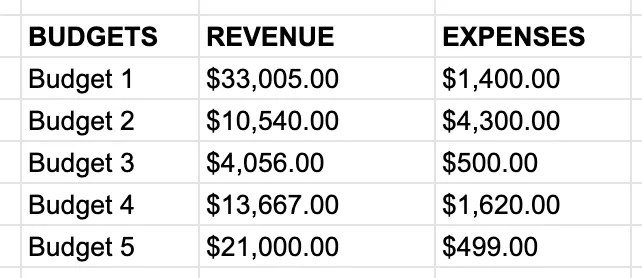
One day, John realized that he should add in all his agency’s overhead expenses, so he did that, too. But a few months later, what seemed like a project that would earn a 40% margin, turned out to be 18%. Why?
John dug deeper into his expenses and team’s utilization and realized a few crucial things:
Firstly, some of the teammates that he assigned to this project were too expensive for this particular project to make a higher profit.
Secondly, there were additional overhead expenses that he hadn’t factored into his expenses at the beginning.
All this led to an even lower profit margin of 9% on this particular project.
And so John decided: I need to be able to monitor my profitability per client and project in a system that will factor in all my expenses, overheads, and additional costs and generate real-time reports that will tell me what to decide next.
I used to be stuck in Excel every day, and it sucked. Now it’s quite cool, coming into work. My day has improved, every single day, from every single perspective. As a project manager, it definitely gave me more confidence to make decisions because I’ve got the data to do it now.
Read Quintica’s journey with Productive here.
How To Maximize Billable Time to Increase Your Agency Profit Margin
To figure out how much you should charge, you’ll want to answer the following question: what are your agency’s actual utilization rates?
Maybe you’re already using a few tools to combine data and figure out your utilization rates. Maybe you don’t have utilization data available at all.
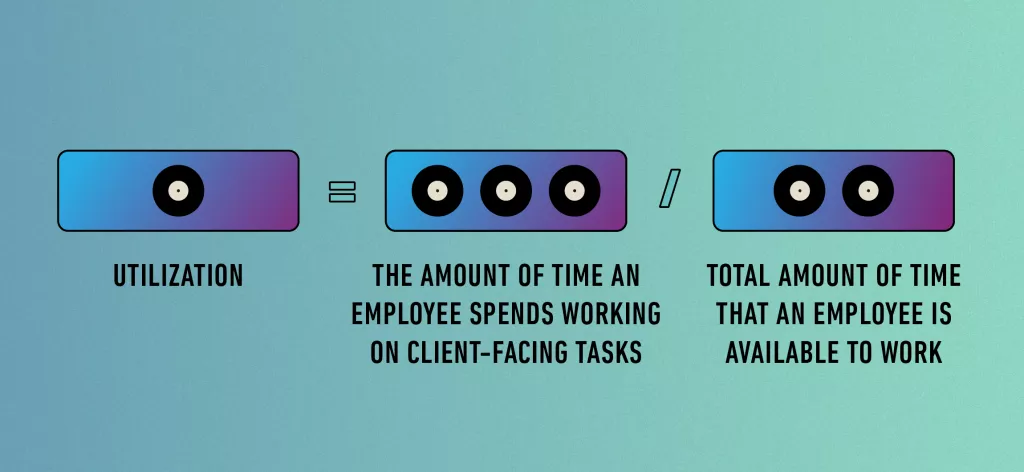
There’s no unified way of measuring your utilization rates, but one thing is for sure: it’s necessary for employees to track their time for both billable and non-billable work in a tool that will then show you how well they’re being utilized.
Generally, employees in agencies tend to work an average of 120 hours per month, which is around 1,440 hours per year (including vacation, sick leave, training, etc.). By looking into the utilization of your employees, you can see how well they’re performing and whether they’re allocated to the right types of services. If your actual utilization per employee is around 75% on a yearly basis, that’s a pretty good result.
Find out more about the most important metric for your agency business.
Once you have a clear picture of your utilization rates and all your expenses, it’s time to use a simple, yet proven formula to calculate how much you should charge for your agency services.
Basically, what you need to do first is take an employee’s gross monthly salary, multiply it by 12 months, and multiply that number by three. Like this:

What you have now is the gross annual salary of an employee multiplied by three.

Then, divide each employee’s gross annual salary by effective working hours per year. Let’s say the number of effective working hours is 1,440 on average for a 40-hour workweek. When you divide the gross annual salary by hours worked, you’ll end up with the hourly rate you need to charge so your agency can make a profit.
In order for a company to be profitable, a worker must cover the cost of his annual salary, times three. This is popularly called one salary for you, one salary for the company (overhead), and one salary for the boss (profit). The fact is, agencies have a lot of hours that are non-billable, which still need to be covered. All these hours that add up should be covered by the so-called Times Three Model.
Using One Tool To Increase Agency Profit Margin and Efficiency
Having a single point of trust for all your financial data, leads, budgets, and project communication helps you increase agency profit margins by reducing the amount of time that typically gets wasted on:
Unconsolidated communication regarding projects and tasks across multiple tools
Resource planning data in 2-3 systems
Financial reprotsin multiple places
Administrative work connected to invoicing and payroll on different platforms
Profitability reports in Productive include your overhead, employee cost rates, and any additional expenses, which give you real-time margins. Continue reading to see how Productive manages all of the above with a single platform for all your agency management needs.
3 Tips for Profitable Digital Agencies
Although there is no surefire road to success, that doesn’t mean that certain steps can make healthy profit margins just a little easier to reach. In the following section, we’ll give you some advice on how you can utilize software to increase your agency profitability and make running your marketing agency easier, with first-hand testimonials from agency professionals and practical use cases.
1. Master Time Tracking
As a digital marketing agency, you’ll likely have some type of time tracking process implemented. The question is: are you getting the most out of your time management? Using a separate tool or Excel spreadsheet might get the task done, but it won’t get you the same benefits that using an integrated time tracking platform will. For example, Productive can help you connect your resource planning with time tracking, leave management, budgeting, and project reporting. All of this ensures that you’re getting a more accurate picture of your agency operations, including key financial data.
See also: 13 Best Agency Time Tracking Software in 2023
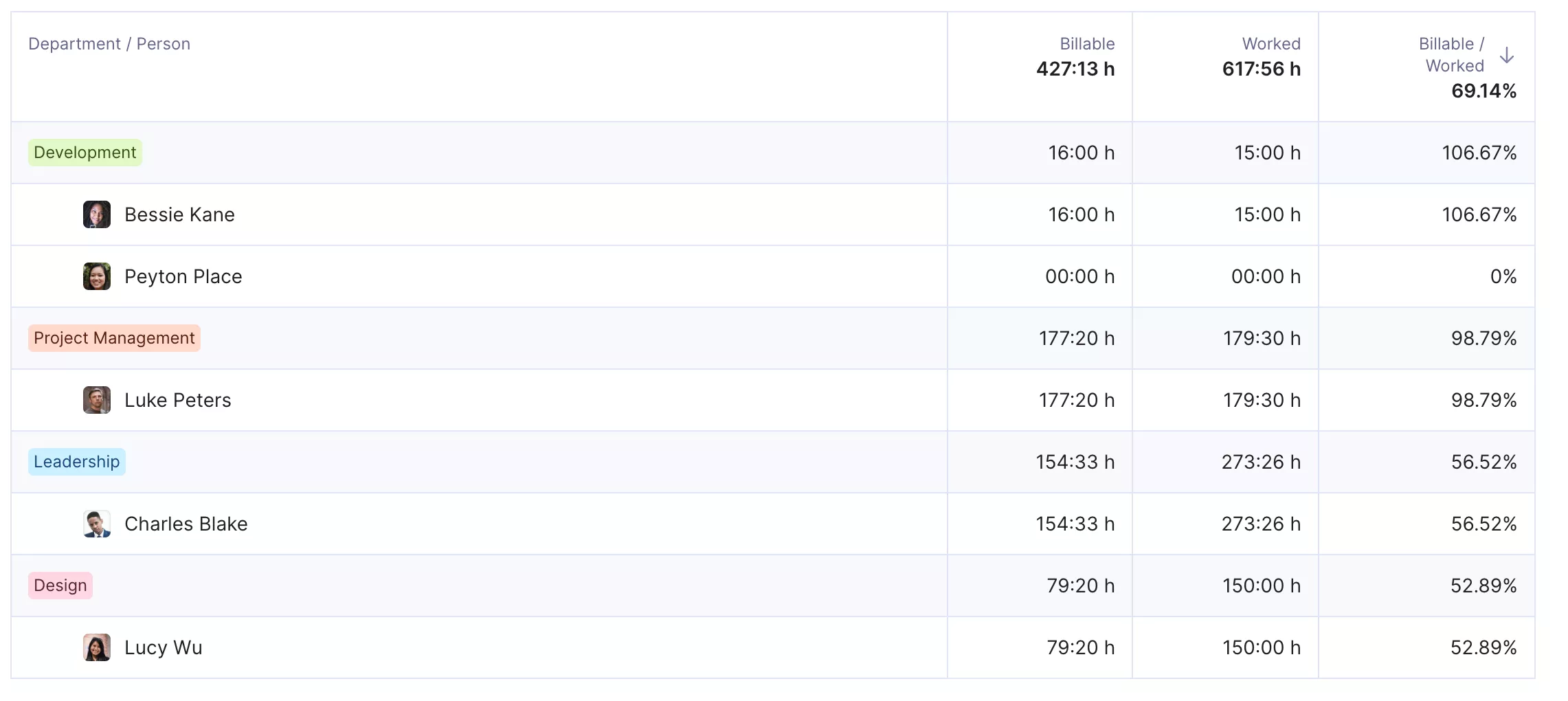
GET ACCURATE TIME TRACKING DATA THAT FUELS YOUR AGENCY PROFITABILITY ANALYTICS
2. Automate Repetitive Tasks
Workflow automation is an easy way to minimize time spent on non-billable tasks. With Productive, you can streamline manual tasks such as billing by pulling budgeting data directly into brand-friendly invoices. You can also create more than 50 agency-focused reports and populate them with platform data, or add additional reports with custom fields. By saving time on administrative tasks, you can open up your employee schedules for high-level client project tasks and improve agency utilization, which we’ve already established as one of the most important profit-tracking metrics.
Now, when we deliver a project, we just create an invoice in the app, send it, and then close the project. No extra time needed.
3. Monitor Agency Profit Margins
In Productive, you don’t need to calculate your agency profit margins because profitability reports automatically do that for you.
Here’s a quick breakdown of how to calculate your agency’s profitability in Productive:
1. Add all your employees and their salaries into Productive.
2. Add in all your clients and projects, including how much they pay you for your services (choose from different options: fixed monthly rates, monthly hourly rates, fixed rates).
3. Add your overhead costs if you haven’t already.
4. Once your project kicks off, your employees need to track their time on a daily basis.
5. Managers will determine whether these hours were billable or non-billable and approve them or request changes.
6. Productive automatically calculates the profitability of each project and client and tells you what the cost of overhead (fixed + variable) is, per hour. It also calculates overhead per working hour, per project, and factors it in—giving you your profit in real time.
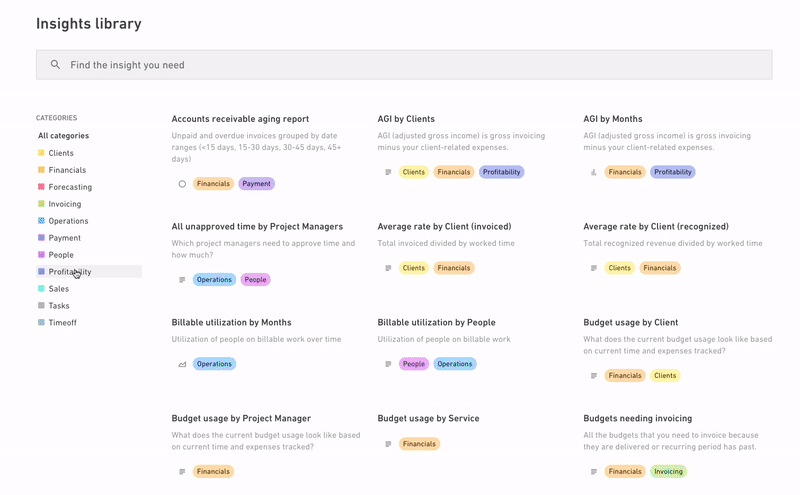
Takeaway: Increasing Your Marketing Agency’s Profit
Here’s what you should take away from this post:
If your agency profit margins are too low, consider adopting value-based pricing, reevaluate your utilization rates per employee, and rethink your current resource planning;
Use a proven method for calculating how much you should charge for your services;
Factor in your non-billable time as overhead.
Without one tool to manage your agency, it’ll be difficult to set your business up for success. Schedule a demo call with our team to learn how Productive can shape your agency’s future.
FAQ
What is the profit margin of a social media marketing agency?
According to a report by HubSpot, digital marketing agencies have an average profit margin between 11-25%. In 2021, digital marketing services surpassed this average, as a majority of digital agencies reported revenue growth of 44% and net profit margins of 36%, a significant increase compared to data from 2020 (SoDa 2022 Report).
Some general tips for boosting your digital marketing agency’s profit margin are:
Consider your pricing strategy: As much as the thought of raising prices might seem counter-intuitive, to increasing your profit, research shows that 89% of all B2B products are underpriced by at least 3.5% (Profisy). A good option to consider is offering tiered services so that clients can make an easier decision on which level of support they need, and what they’re willing to pay for it. Additionally, make sure you’re not selling yourself short. If you believe you can provide a good service, go for an opportunity to win a larger client, as it can have a significant impact on your brand image and reputation.
Focus on talent retention: Making sure that you’re providing a healthy and stimulating environment for your employees is more important than you think. By having a high attrition rate, you’re not only losing valuable know-how but also significant resources and time that will be spent in finding a replacement. In fact, research shows that the cost of replacing an employee is more than two times an employee’s annual salary (Forbes). Consider which competitive benefits you can offer to keep your employees, but make sure that you’re keeping them productive with a goal-oriented approach to projects.
Measure core financials: Although this tip seems like a no-brainer, research from SoDa shows that more than half of digital agencies do not use an integrated business platform for tracking in-depth, real-time data. Having a tool that can keep you in sync with your financial performance at all stages of your project delivery is indispensable to making timely decisions and increasing your agency’s profitability for future projects. An example of a finance-oriented tool is Productive, the all-in-one agency management software.
How much does a digital marketing agency sell for?
According to data, digital marketing agencies tend to fall within a middle range of valuation multiples when sold, commonly reaching prices between 2-5x their annual revenue of $2 million to $5 million (Productive). Some good practices for boosting your agency’s value are:
Low client concentration: Although having a big client can have its benefits, depending on one source of revenue is risky, to say the least. Make sure to work on diversifying your client list to avoid having to jump through loops in order to avoid losing your largest revenue stream.
Good business reputation: Getting your agency’s name out there is another surefire way to increase your value. Don’t underestimate the return you can get from investing in your branding and reputation, both local and global.
Business development strategy: Buyers want to have security that once a digital marketing agency has been acquired, the business will keep moving along without a hitch. For this to happen, it’s important to have well-developed workflows and an owner-independent BD strategy.
For a free estimation of your digital agency value based on quantitative and qualitative data, check out Productive’s Agency Valuation Calculator.
What are the revenue streams for a digital marketing agency?
Digital marketing is a broad field with many core revenue streams, that can include social media marketing, search engine optimization, content marketing, lead generation, email marketing, marketing automation, and more. Aside from these core revenue streams, there are additional ways to ensure a passive income, such as:
Consulting: If you provide niche or expert services, you might be able to boost your revenue by providing guidance to your clients. Keep in mind that consulting can be time-consuming, as it requires dedication to a client. Set your hours and the extent of your services carefully.
Affiliate marketing: Affiliate marketing is the promotion of a particular product or service. It can be a great source of passive income, as it requires less time and effort than for example, consulting. Affiliate marketing brings the caveat that you need to be careful to choose products that align with your target audience and do not interfere with your client projects.
Business partnerships: Consider working with other agencies or businesses to expand your industry offerings and gain new clients and opportunities. The main challenge of business partnerships is finding the right partner for your business and maintaining stable, productive working relationships.
Course creation: Make use of your agency’s expertise by offering marketing courses on a variety of topics. The downside of this is the initial investment of time to make in creating materials, and potentially providing student support, though the latter depends on your course structure. If done right, a course can generate significant passive income with comparatively little long-term effort, as well as increase organic traffic.
Increase Your Agency’s Profit Margins
Get insights into key digital marketing agency metrics with an all-in-one management tool.



